Nolan, Kim and Colton d’Eon’s Award Winning Ruisseau Oysters
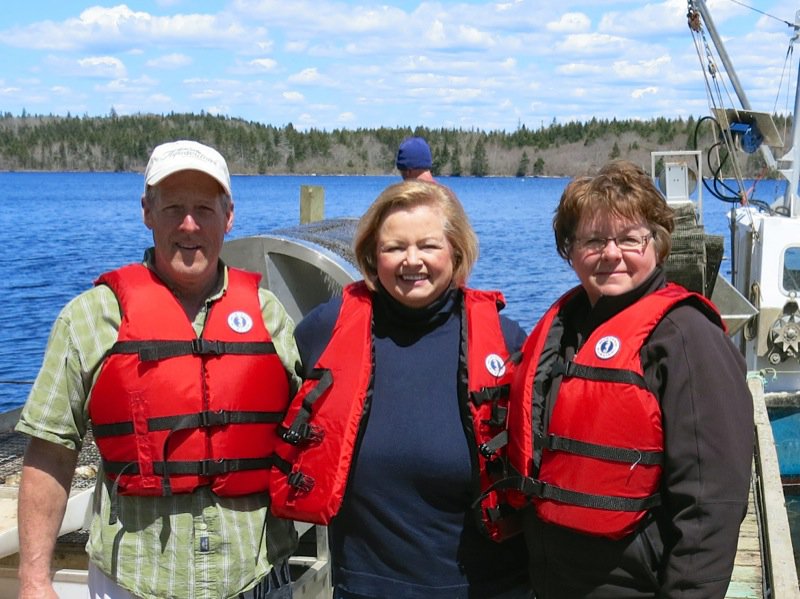
What are Ruisseau Oysters? They are Kim, Colton and Nolan’s d’Eon’s oysters farmed in the icy waters of Eel Lake at Ste. Anne du Ruisseau, Nova Scotia. The terroir of this fresh water lake mingling with the mighty salt waters of Atlantic coupled with attentive hard work and care from this fishing family has created a flavour and texture distinct to The Eel Lake Oyster Farm that has these special oysters highly sought after in this region. This is an Atlantic Oyster commonly known as the American or Eastern oyster, but it is transformed in this lake to the award winning Ruisseau Oyster!
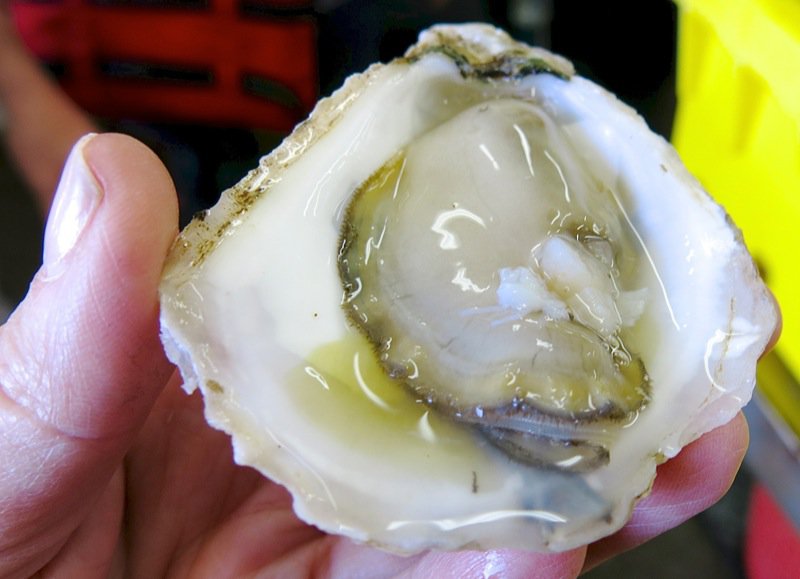
The nectar around the glistening oyster is bright, light, clean and sparkles with that magic created via the meeting and mingling of the Eel Lake waters. The ample meaty morsel is intense in flavour and creamy in texture with a crisp finish and just the right amount of chew. This is surprising for an East coast oyster, as they are usually smaller than their West coast counterparts, more mild and brinier. The West coast varieties, from which I am much more accustomed, are larger, very “oysterie” in flavour (intense) and have a velvet-creamy texture when eaten raw. I will go out on a limb here, and describe the flavour of the Ruisseau oyster I tasted at Eel Lake as buttery and on the sweeter side. Certainly, not a briny oyster. Loved it. In 2012, Eel Lake Oyster Farm was awarded A Taste of Nova Scotia Prestige Award: 2012 Consumer Choice Product of the Year. That is a very big deal. There are a lot of oysters harvested in this province. Nolan was quoted by Bill Spur, “Whether it is because the lake is relatively shallow, and thus warmer, or because of its salinity — 22 per cent compared with 31 per cent for ocean water — there seems to be something special about this water.”
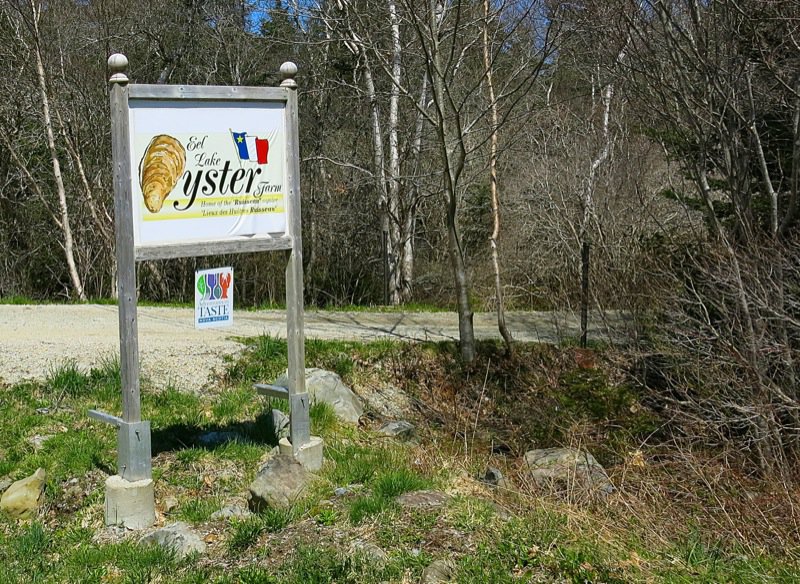
The M’ikmaq people of this area four hundred years ago sought out Eel Lake as a summer fishing ground and harvested oysters from it, thus Eel Lake has a long and noble history of growing oysters that have been treasured. Nolton and Kim have farmed oysters here for 18 years. Their low impact, sustainable fishing practices through the oyster-gro operation they use enables cost-efficient production of these high-quality oysters while maintaining a high quality aquacultural ecosystem.
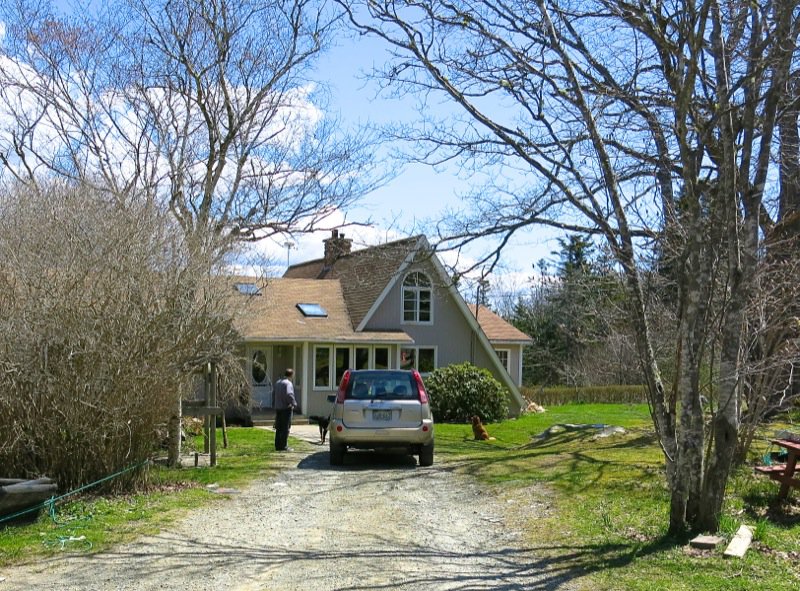
Their home and property is gorgeous. Nolan was first a lobster fisherman, but did not enjoy the work. His story – or I must say, their story – is one of ingenuity, innovative thinking, a great deal of focus, passion and hard work. His story is that quintessential Canadian story that you can build your life around a dream. And what a life they now have. This gorgeous home on a beautiful piece of property beside Eel Lake just a walk down the road away from their boat and oyster cleaning and separating facilities. And, as is the tradition in this area of the province, this business will be passed from father to son.
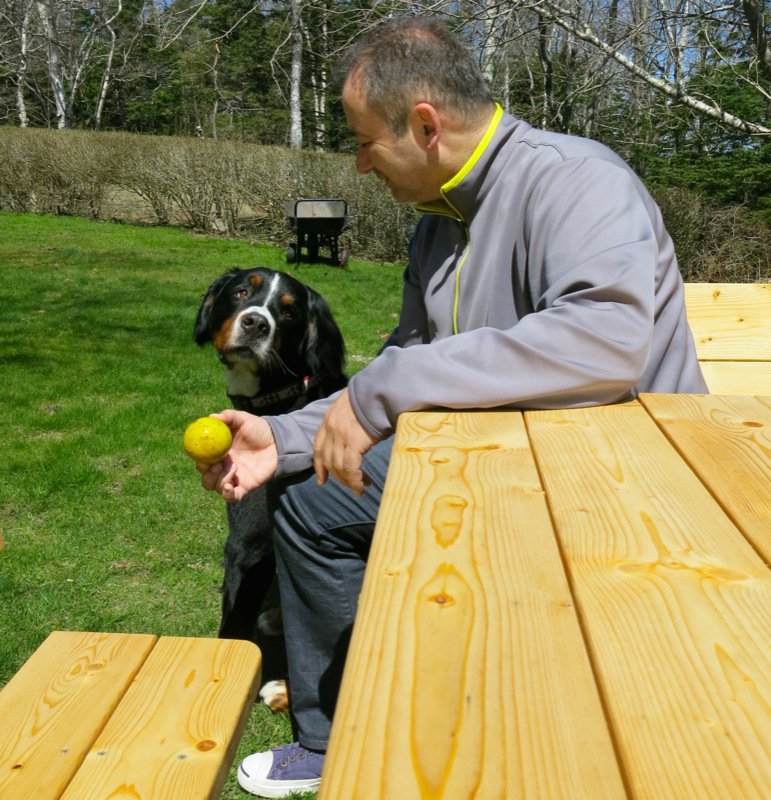
We arrived at 11:30ish May 8 and played with a very friendly pup while waiting a couple of minutes for Nolan and Kim. This is the last of an incredible array of events that Bernice d’Entremont arranged for us during our short time in Pubnico. It started with Lobster Fishing, then eating the Lobster and learning the Pubnico Heritage recipe for cooking Lobster, dining at The Red Cap Restaurant, and that was all after 3pm the day we arrived. This morning, Vanja met me at the Acadian Museum, but had missed the early morning activities which had already included the Acadian Breakfast at the Dennis Point Café, the rappie pie making at d’Eons, the visit to the Acadian Village for the Famous Pubnico Molasses Cookie. He even missed Elaine Surette’s incredible Tea Biscuits at the Acadian Museum. We were traveling from Pubnico to Cape Breton after our tour of the Eel Lake Oyster Farm, so with that long drive ahead, he needed his rest, but he was not about to miss an opportunity like this.
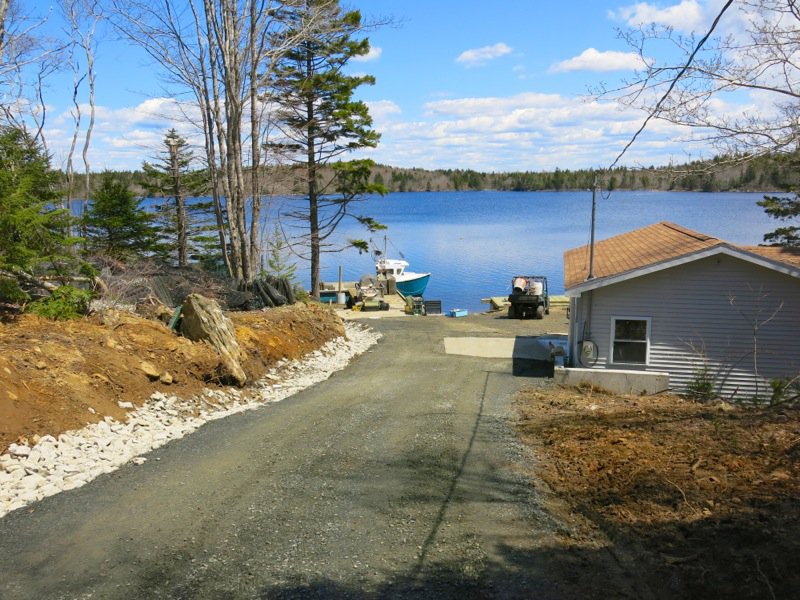
Nolan and Kim work closely with Trout Point Lodge as they serve the Ruisseau Oyster on their menu; they also engage clients in oyster fishing experiences with Eel Lake Farm and cooking classes back at the lodge. This year, Nolan and Kim are also offering their own oyster aquaculture tours. Definitely check them out if you are in the area. They are very reasonably priced. Our experience meeting this vibrant family and learning about oyster farming was one of the top of our trip to the Atlantic provinces this year. I would highly recommend adding one of these tours to your itinerary while in Nova Scotia.
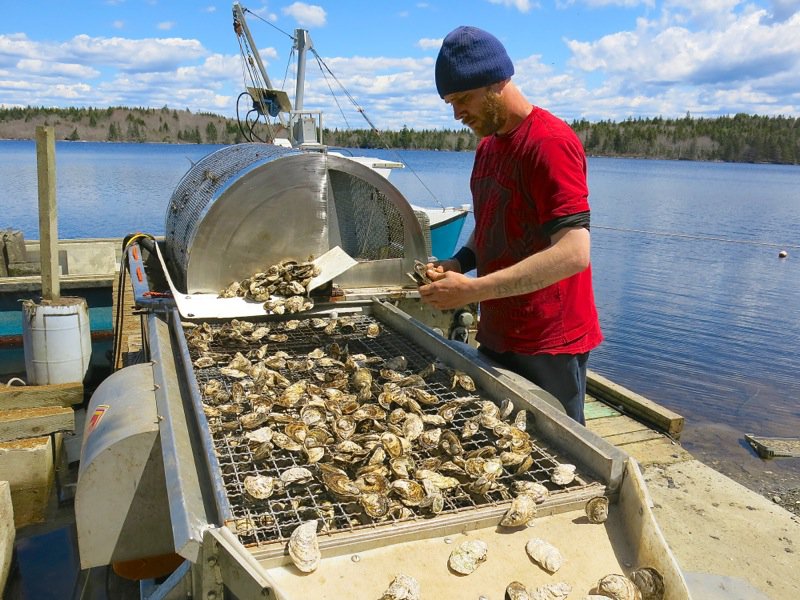
What is happening here? The oysters are being cleaned by Donnie Murphy. Kim commented that every single oyster is touched countless times by human hands before reaching the consumer. That was surprising to me; however, I learned so much about growing oysters and have an even greater appreciation for what it takes to get them to my plate.
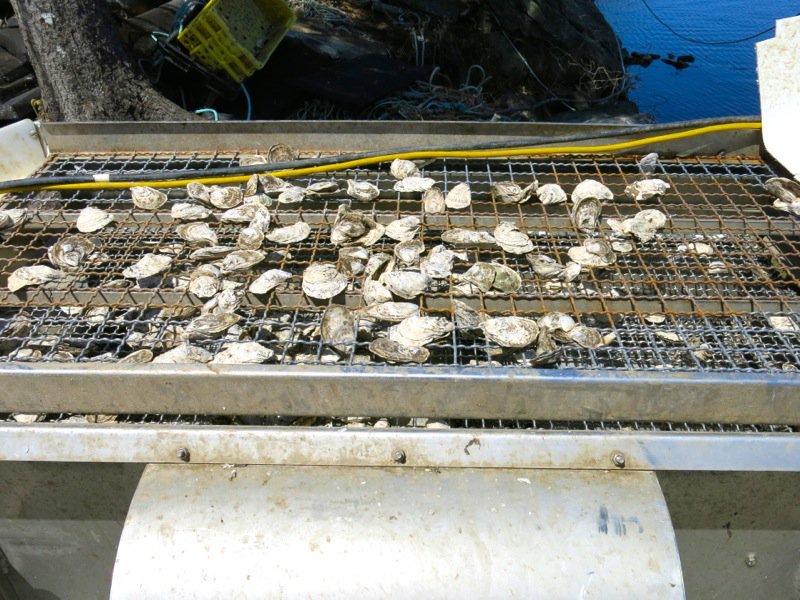
The oysters are poured into a large rotating bin that washes them, and then they come onto this vibrating belt.
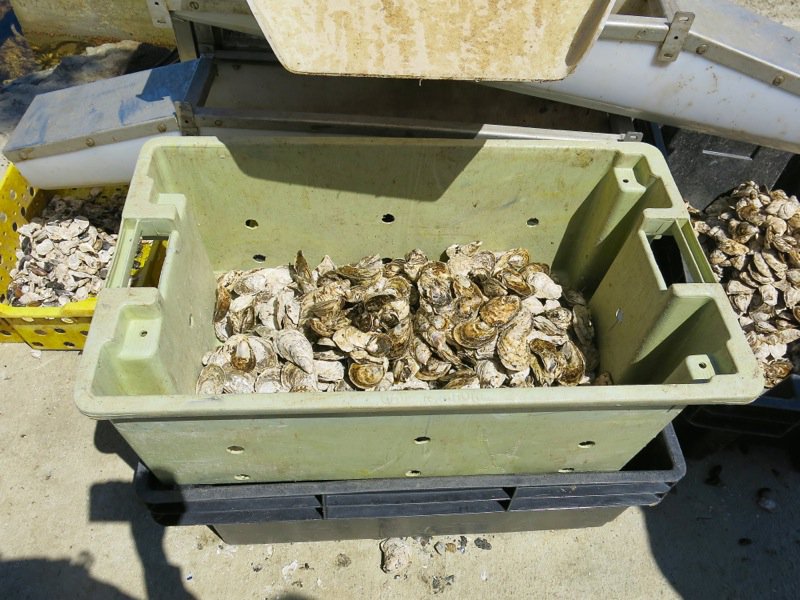
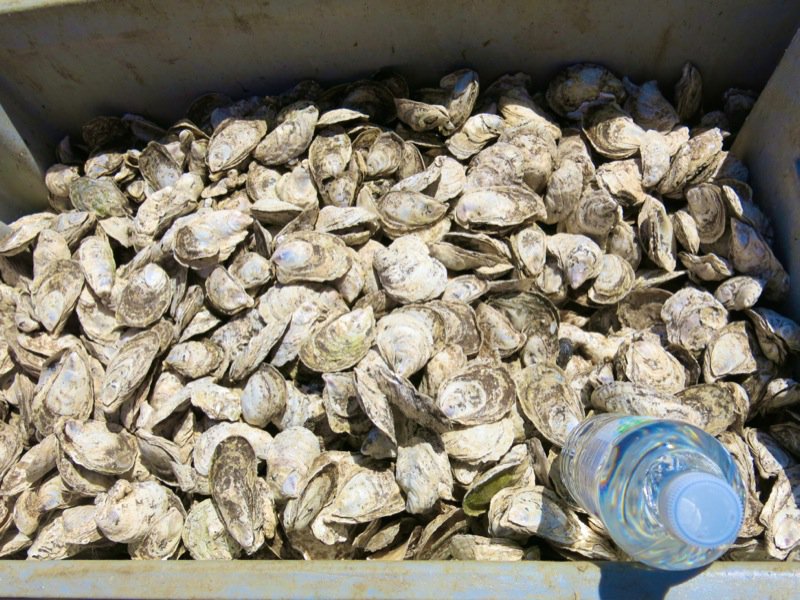
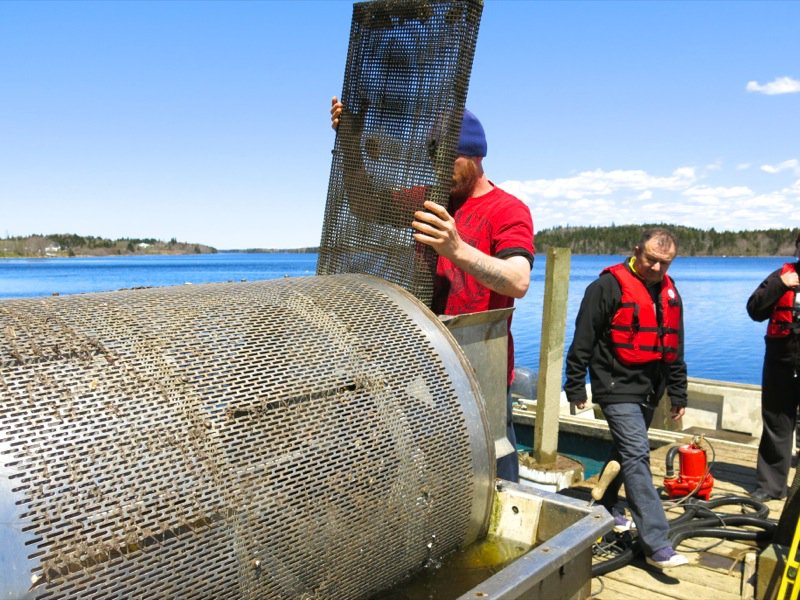
Above, the oysters that have reached maturity (and this takes about three years) are placed into the rotating bin directly from the basket housed inside of the cage used to grow them. Whatever’s market size goes to the plant, but the undersized oysters go right back into the bag, and back into a cage.
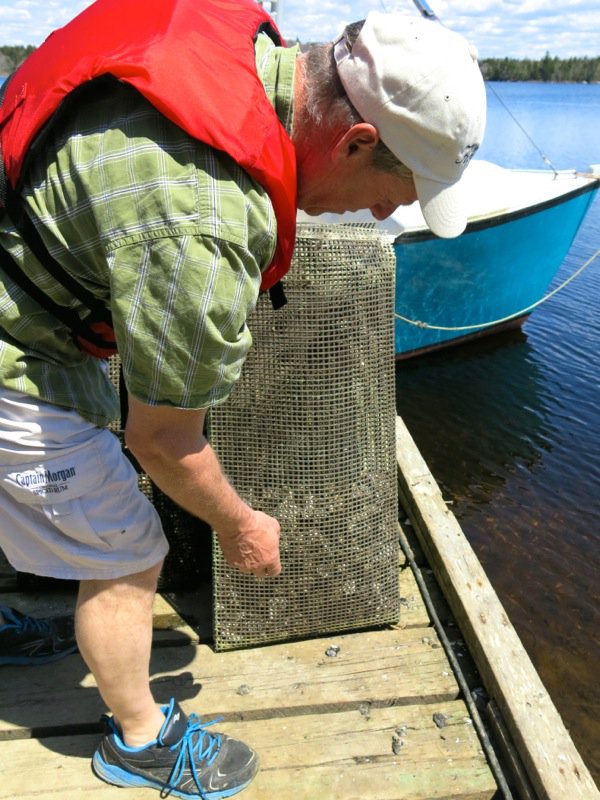
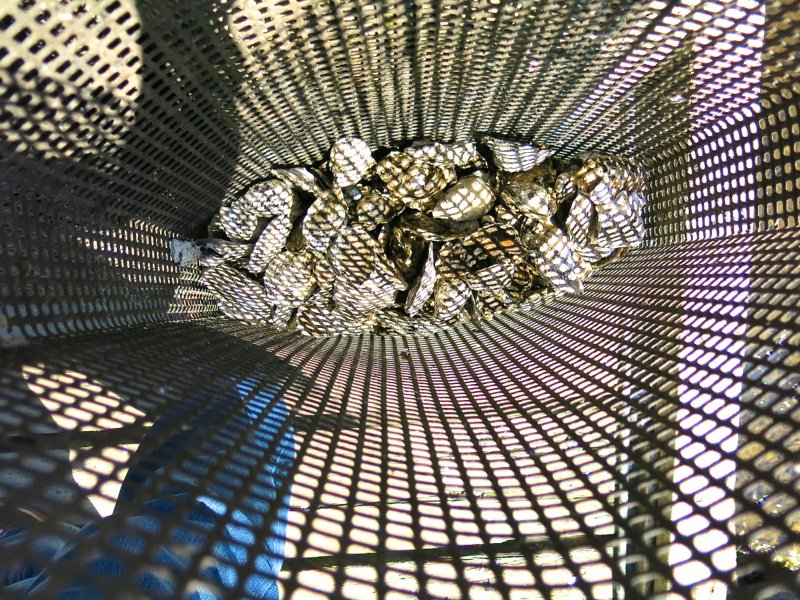
Take a look at what is left in the basket above. There are 200 oysters inside of each basket and the baskets are housed inside of the cages.

And another basket goes into the drum for cleaning. You can see how the rotating drum moves through the water to clean the oysters.
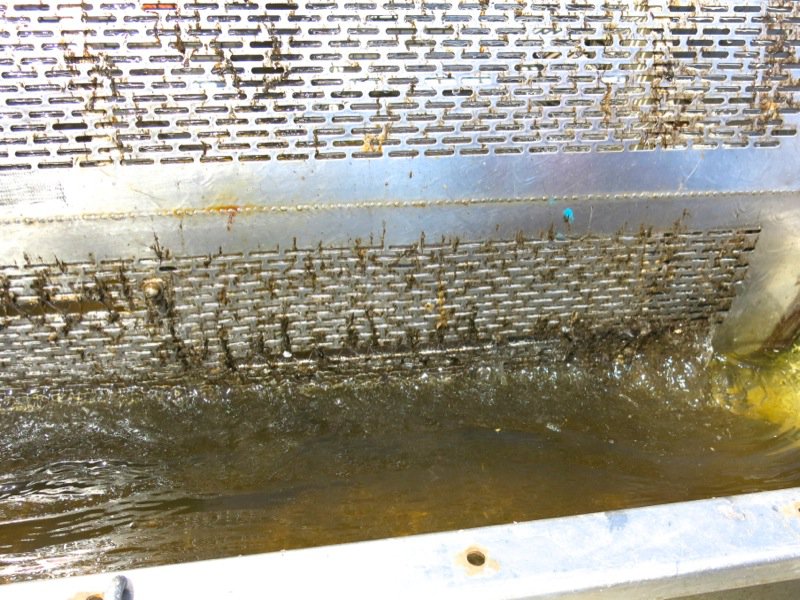
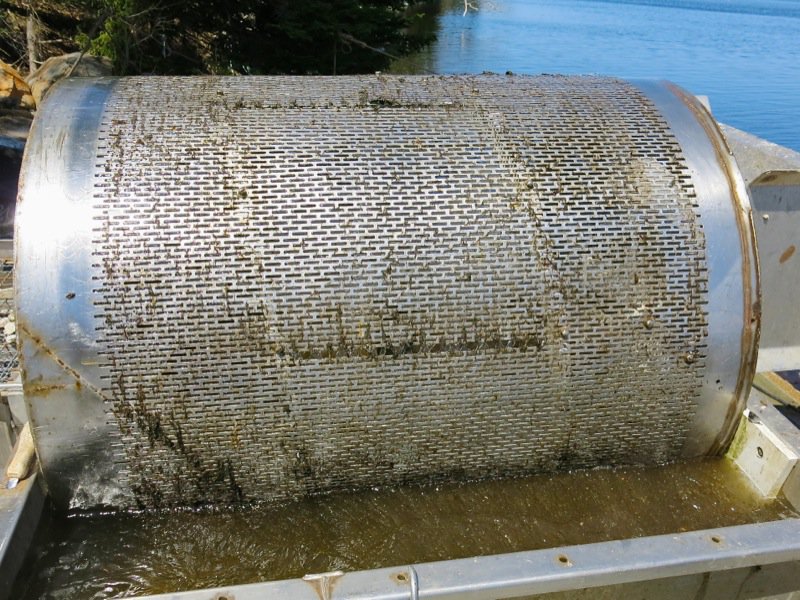
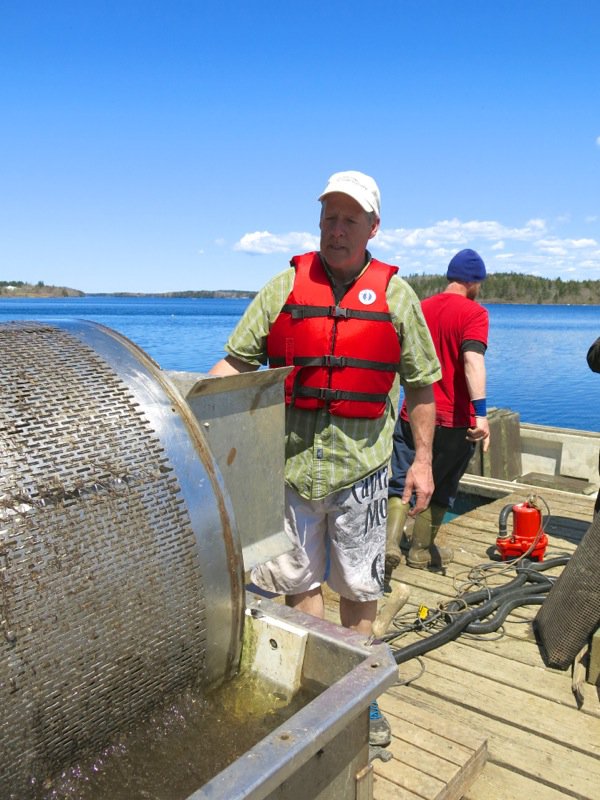
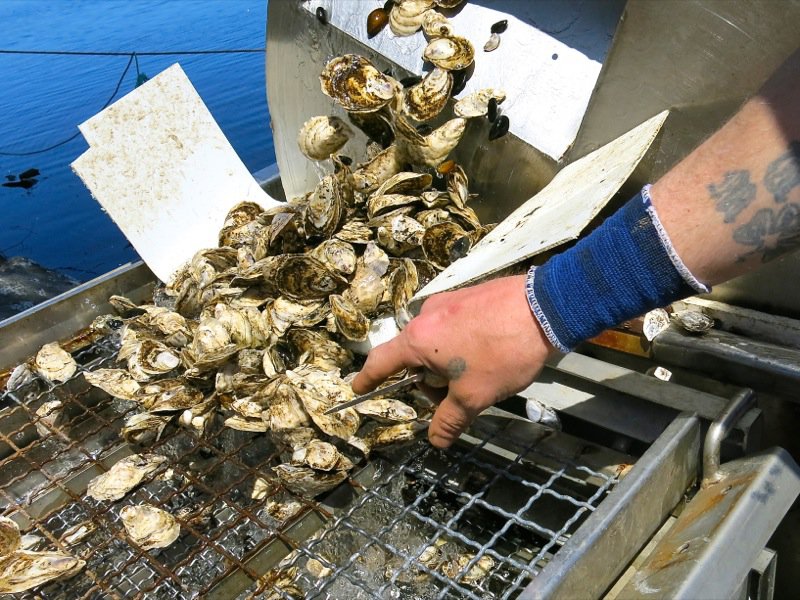
They are also hand sorted and watched carefully as they come out of the drum and roll onto the vibrating belt. Knife in hand to cut off any growths.
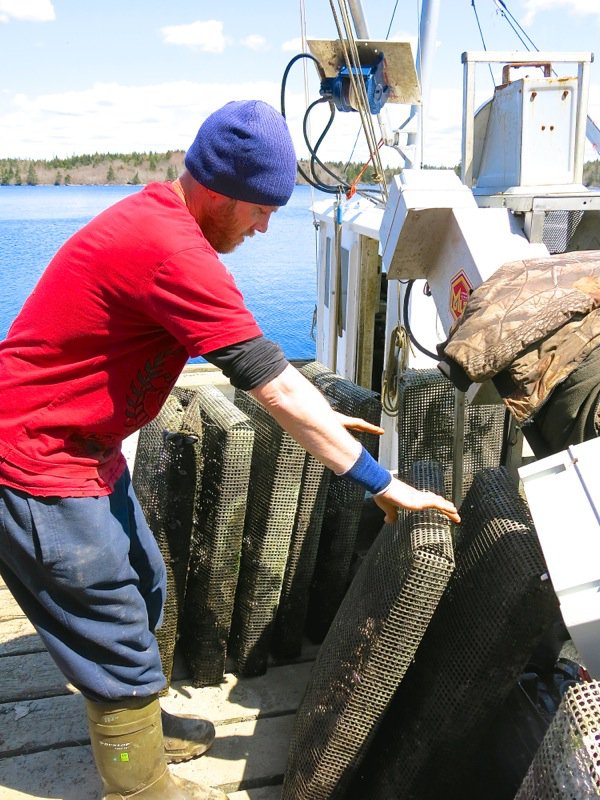
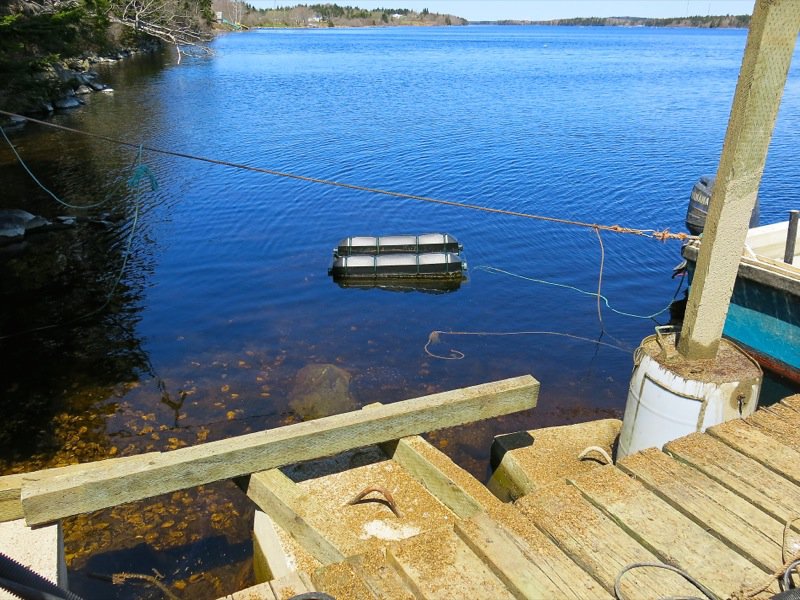
While Colton and Jed Siscoe go in to separate the oysters according to size, and clean them some more, we are out onto the lake on the boat, to learn about how the oysters grow and are cared for until harvest.
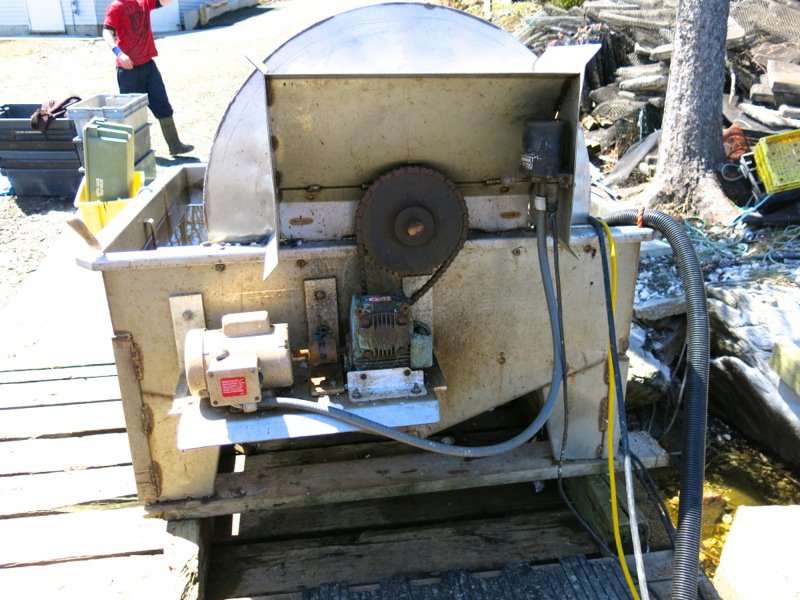
The back end of the big drum with the vibrating belt, above. Below, some interesting jelly fish. The lake was loaded with them this very sunny blue-skied Spring day.
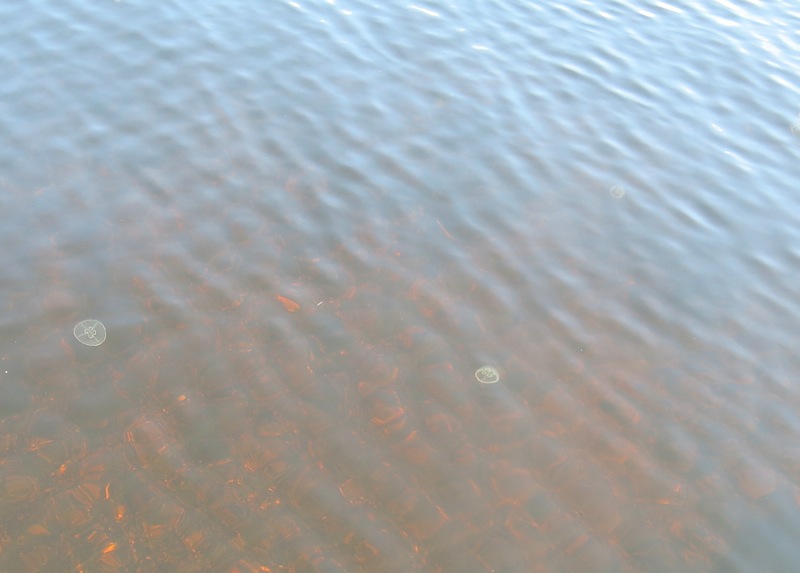
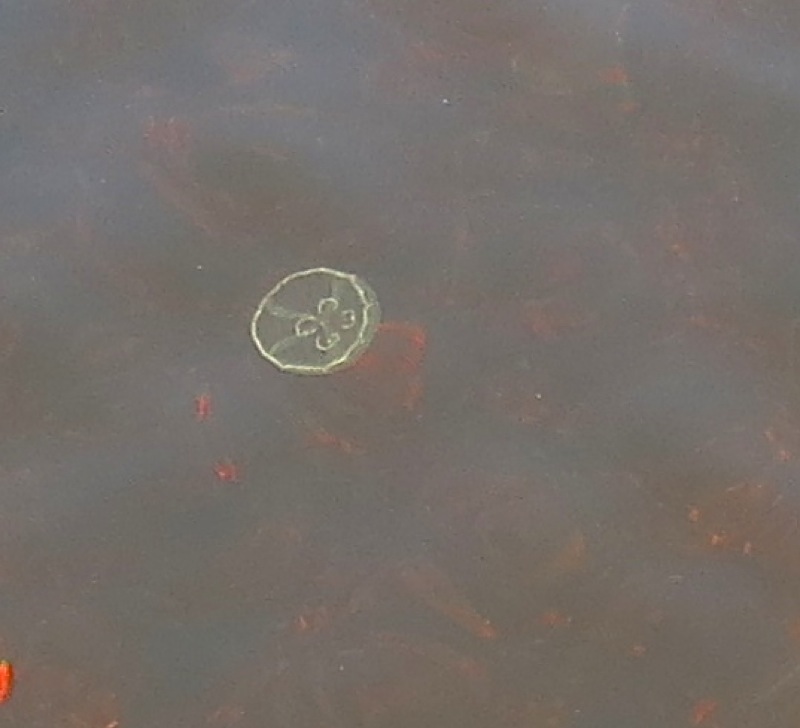
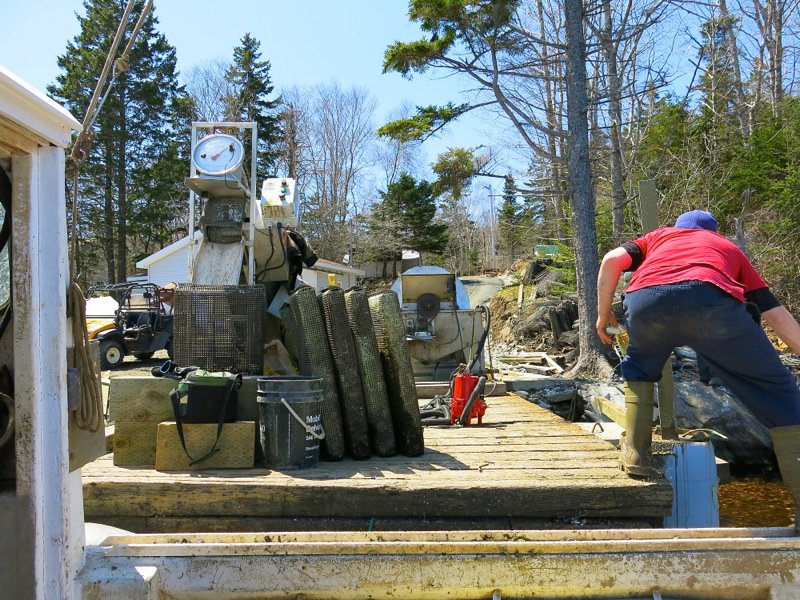
And we shove off.
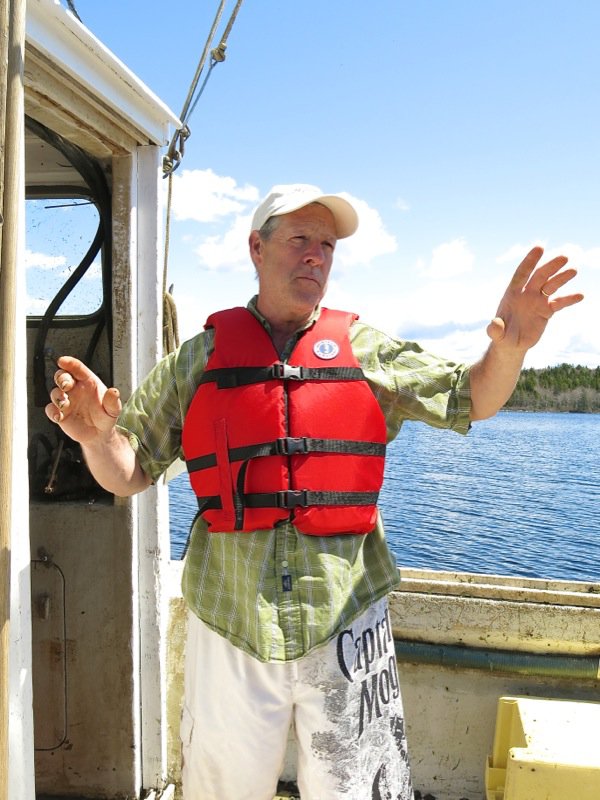
Nolan and Kim don’t just farm oysters in Eel Lake. They farm millions of oysters here: about 4 million. The larvae grow naturally in Eel Lake, Nolan explains; the process that enables greater success for larvae growth will be shown at the end of the tour. He takes us to one of two oyster beds he farms on the lake. Coming from the prairies, I had no idea how naive I was about fishing practices. My face should be painted red. I wondered what the lines and lines and rows and rows of pairs of black buoys were on the lake without it even dawning on me that this was a fish farm. The buoys hold a cage of oysters just under the surface of the water. There is a basket of 200 oysters inside of each cage. This enables the water to flow freely through the basket and provides a natural growing experience for these mollusks. “We don’t feed the oysters,” Nolan tell us. “They are filter feeders and get their nutrients from the water in the lake as they filter the water to grow.” Thus, the sustainability of the operation.
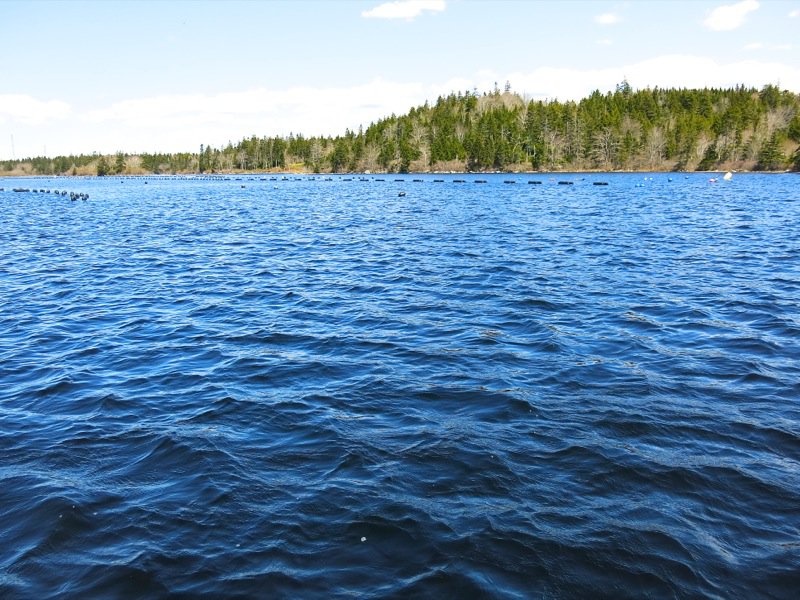
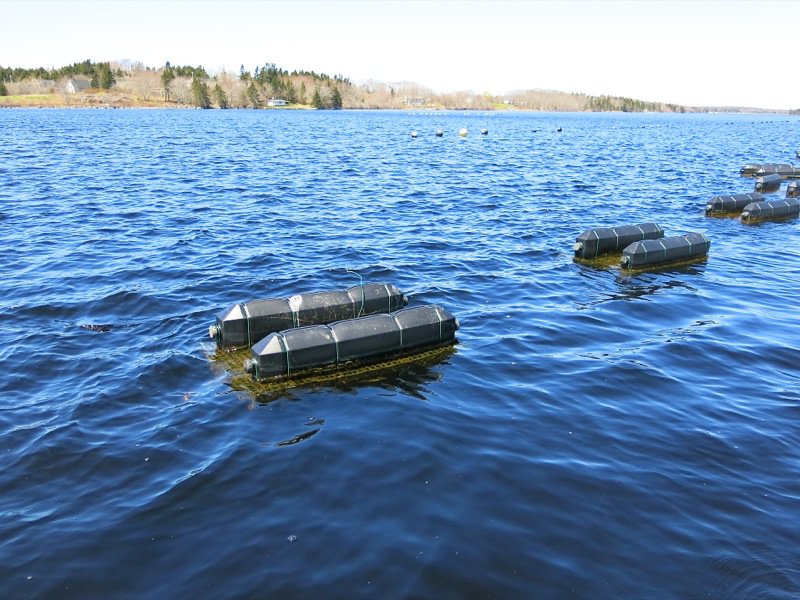
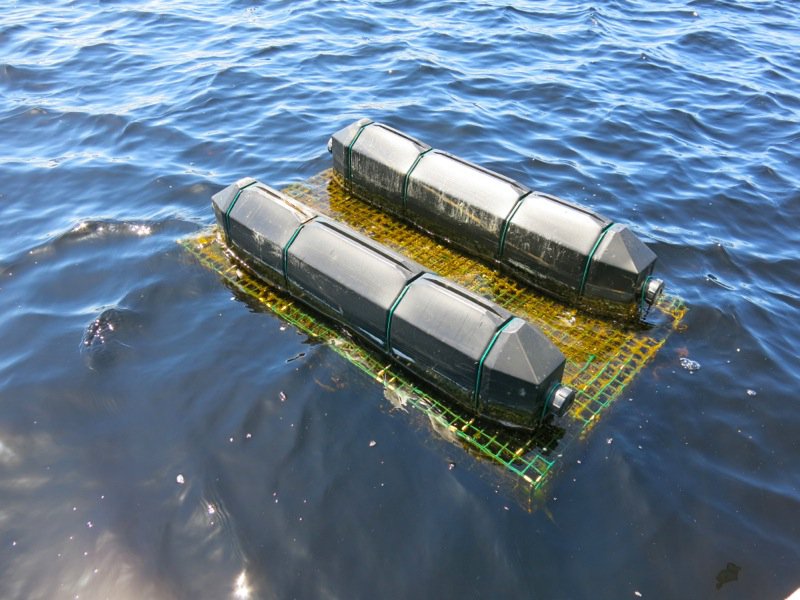
I was in awe. This many oysters in each basket and more baskets than I could possibly begin to count. The baskets are flipped every few weeks to expose the oysters to the sun which kills any invasive species that may have gotten into the cage and cause eventual harm to the oysters. This process works like a charm. The invaders are eliminated by the sun and the oysters are not harmed. They are then flipped back into the water to continue to flourish. The time between flipping varies with the time of year. They were being flipped about every two weeks when we were there. To flip this entire field of oysters would probably take an entire week. They have over a thousand cages at this point.
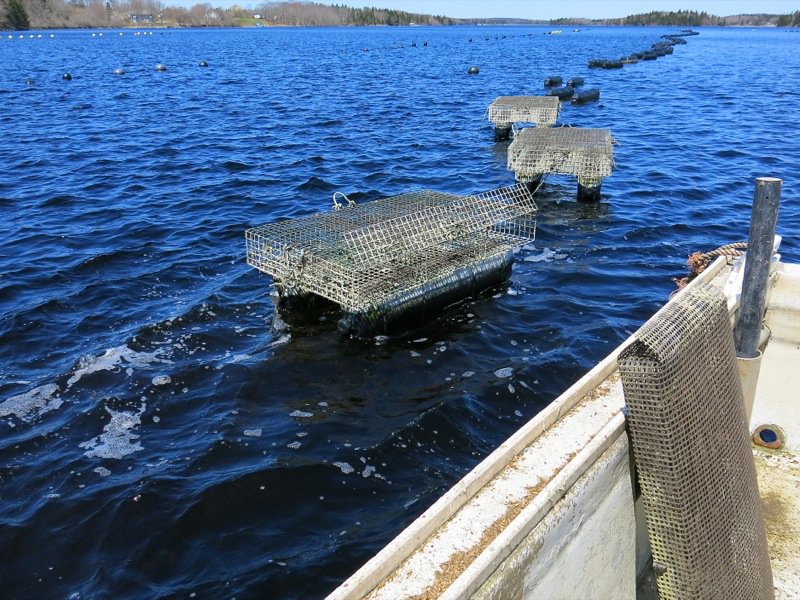
Above, you can see the cage in the water, and the basket that goes inside of the cage is in the boat.
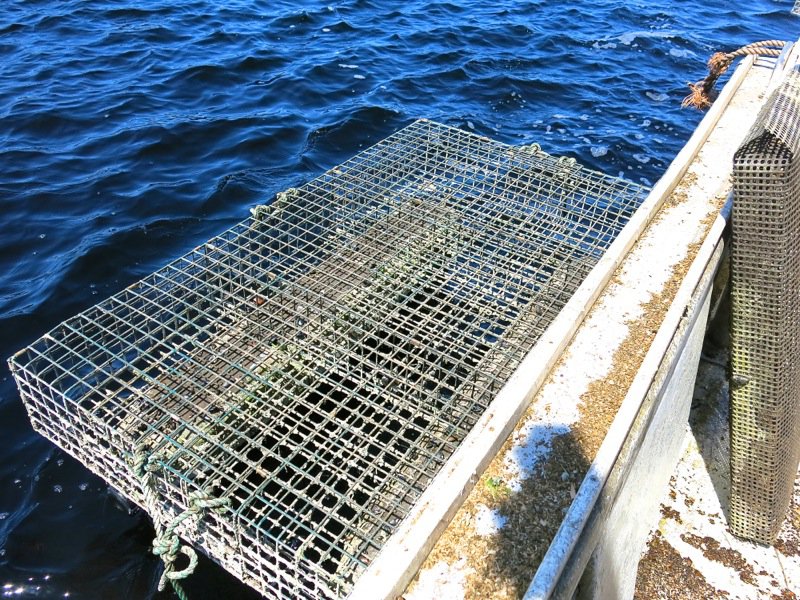
If you look carefully, above, you can see the basket inside the cage.
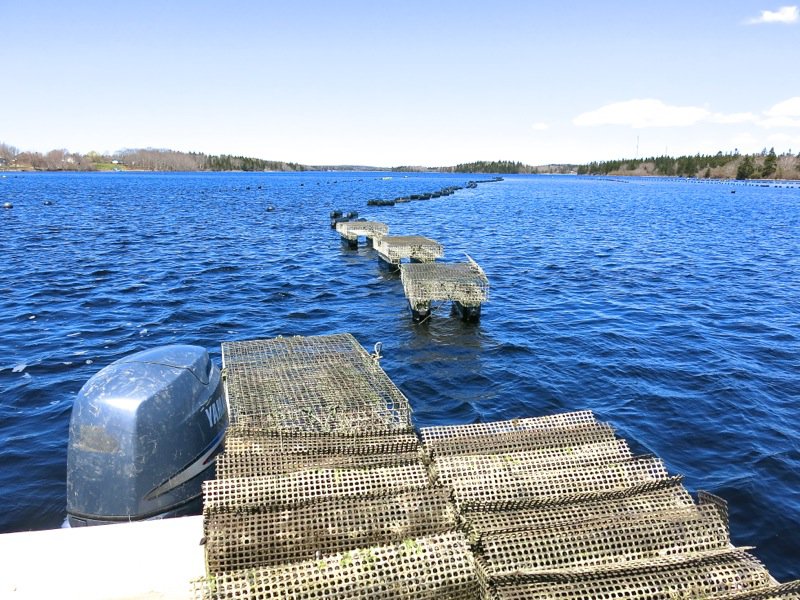
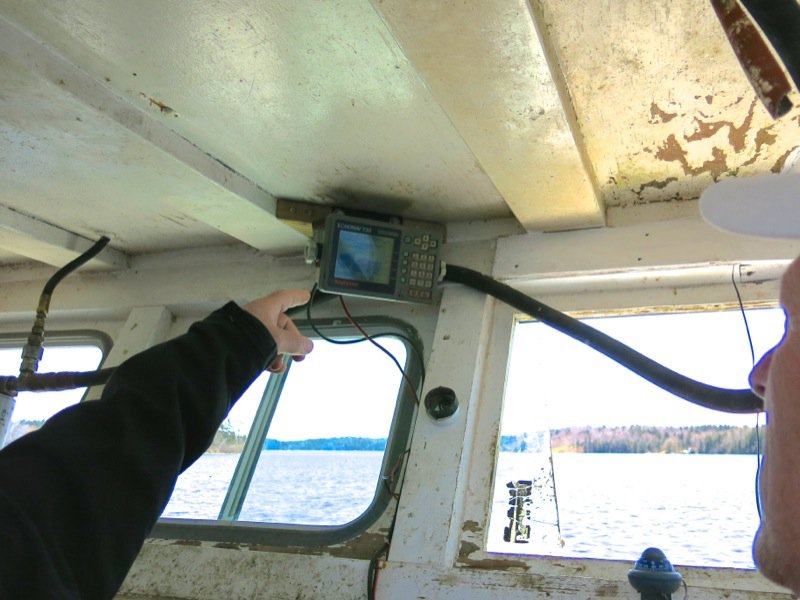
The GPS and technology on the fishing boats has changed the game completely. Fishermen are rarely lost at sea, and Nolan has a good grip of what is swimming beneath his boat.
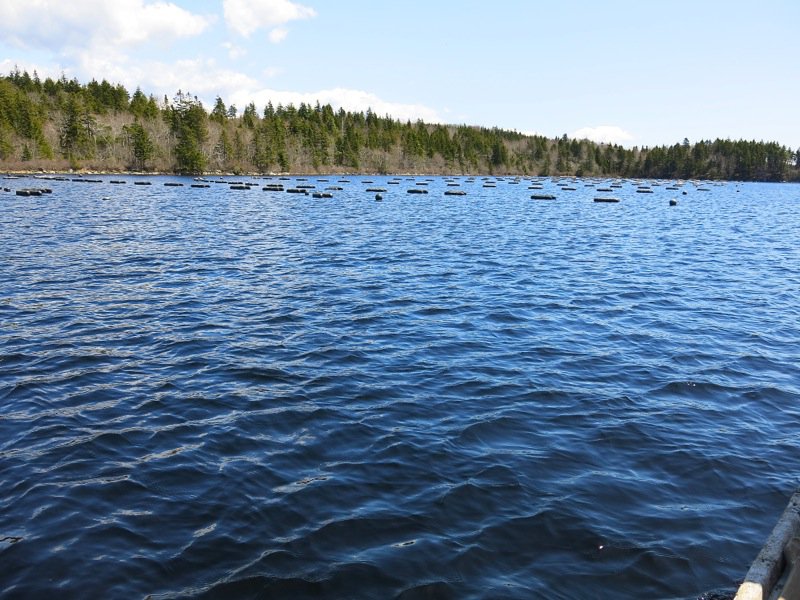
After investigating the farm to the left of the pier, Nolan swung the boat around and headed in the opposite direction. He has a second field of oyster-gro buoys and baskets here.
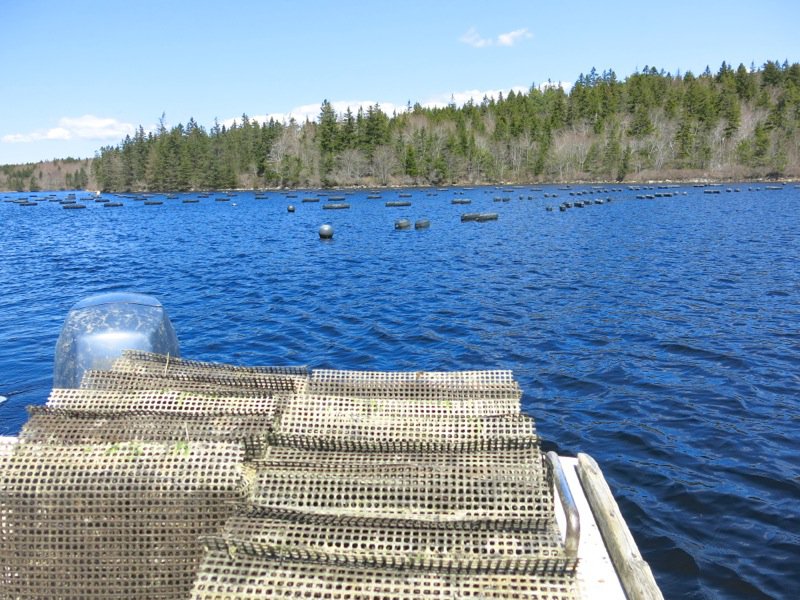
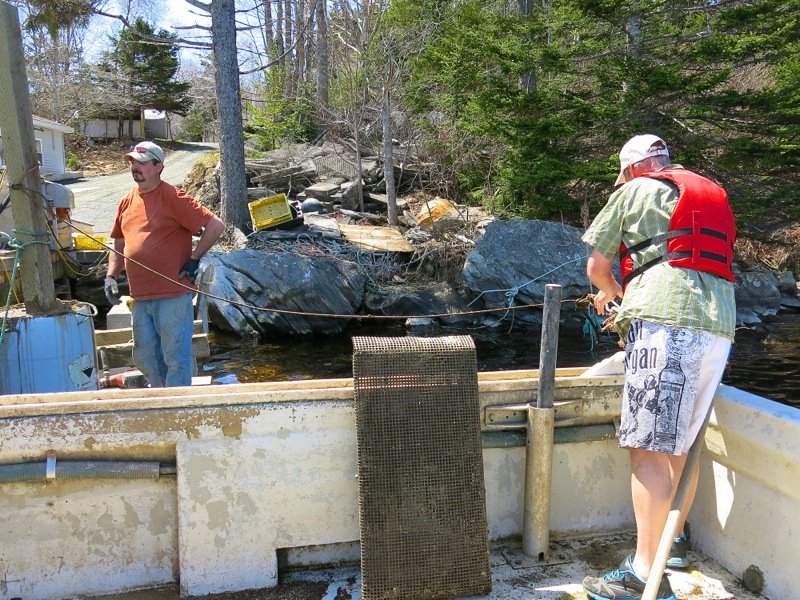
Back to shore, we had a much clearer understanding of the daily work necessary on the water to operate this kind of sustainable farm.
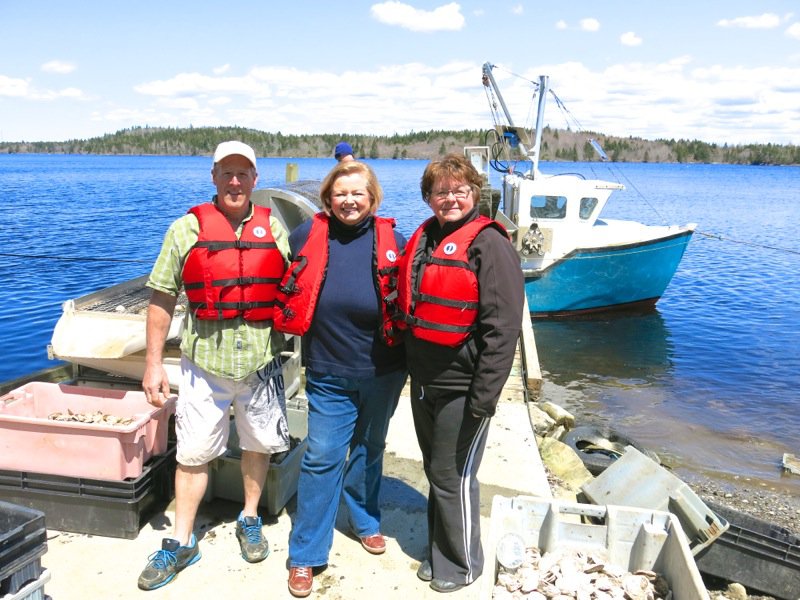
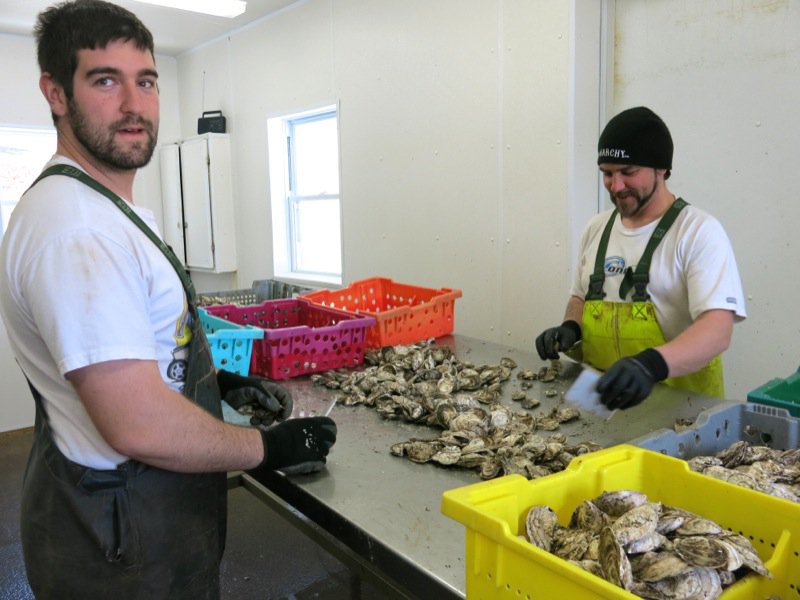
Into the separating room. Colton and Jed Siscoe were separating the cleaned oysters into sizes: small, medium, large and extra large. I prefer small. I have always preferred small when it comes to oysters. Not tiny, but small. I find them crisp and appealing. The extra large have an off putting mouth feel to me, no matter what kind.
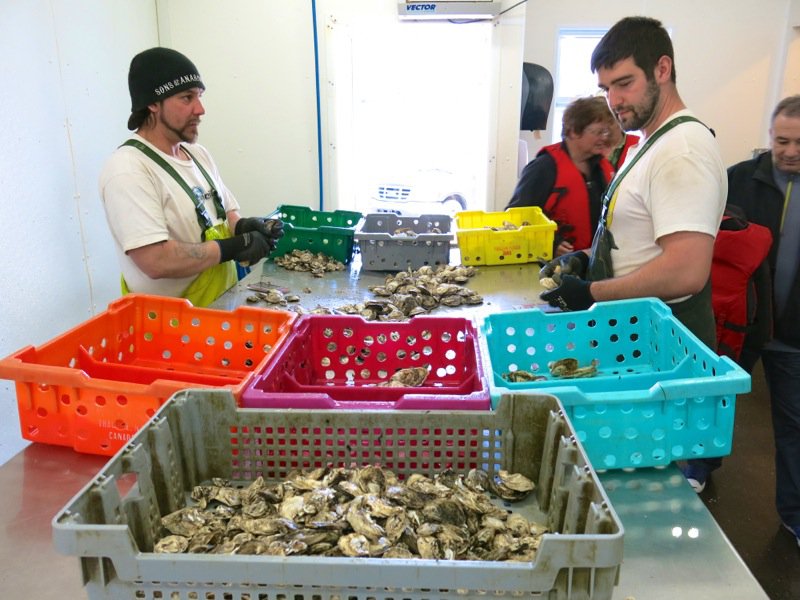
The baskets are colour coded to the size gauge the guys are using which you can see below.
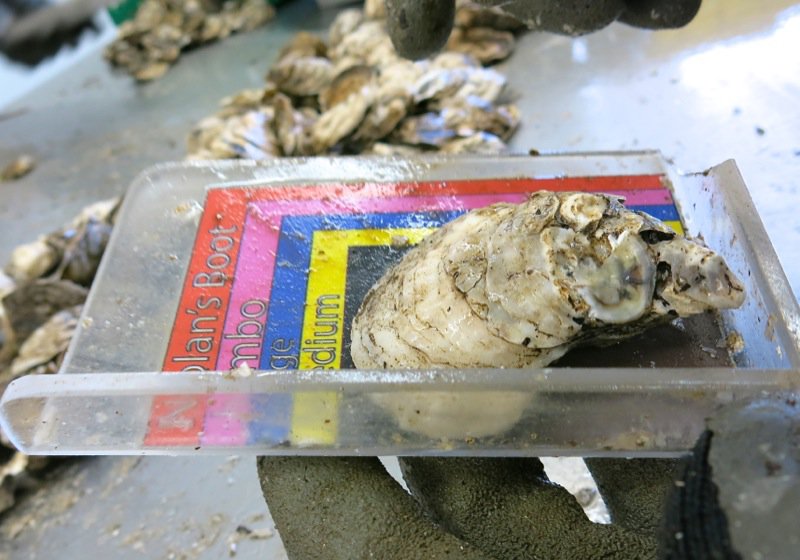
The Nolan’s Boot would be too big for my palate, but appreciate the humour found in the most unexpected corners of this business.
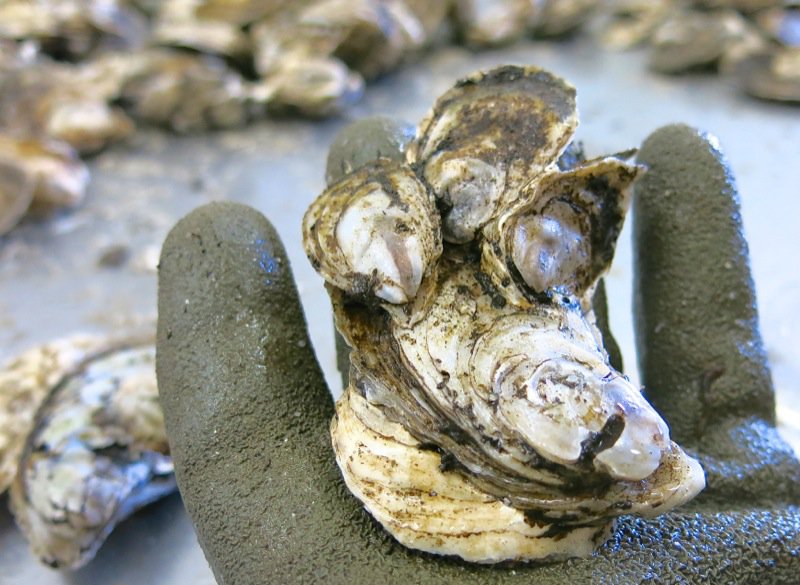
Of course I thought these little mollusks grew clean and perfectly shaped, one at a time. Uh-huh. There are so many that grow into and onto each other. Separating them is part of the process.
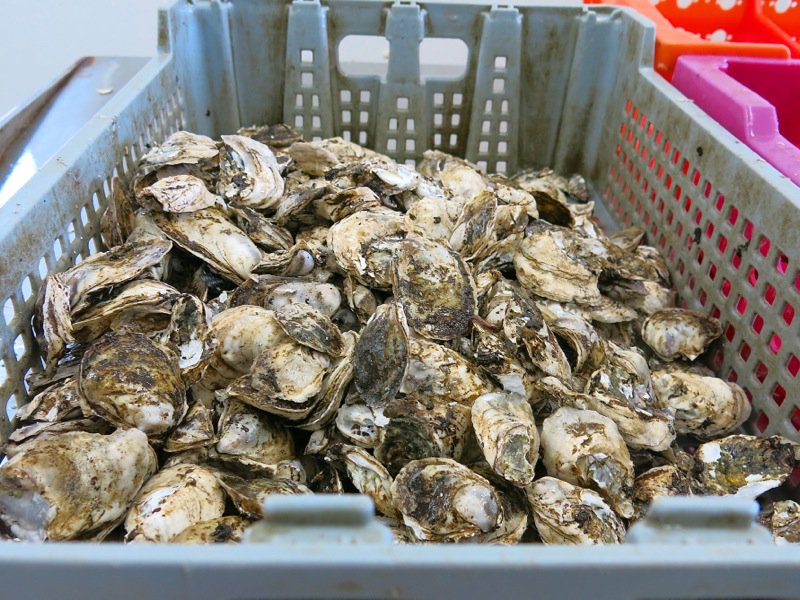
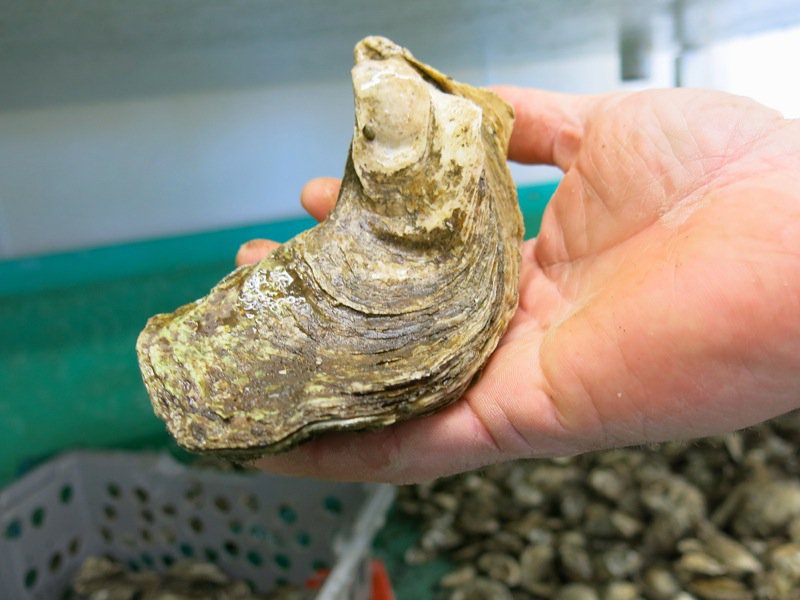
That is a pretty beg fella!
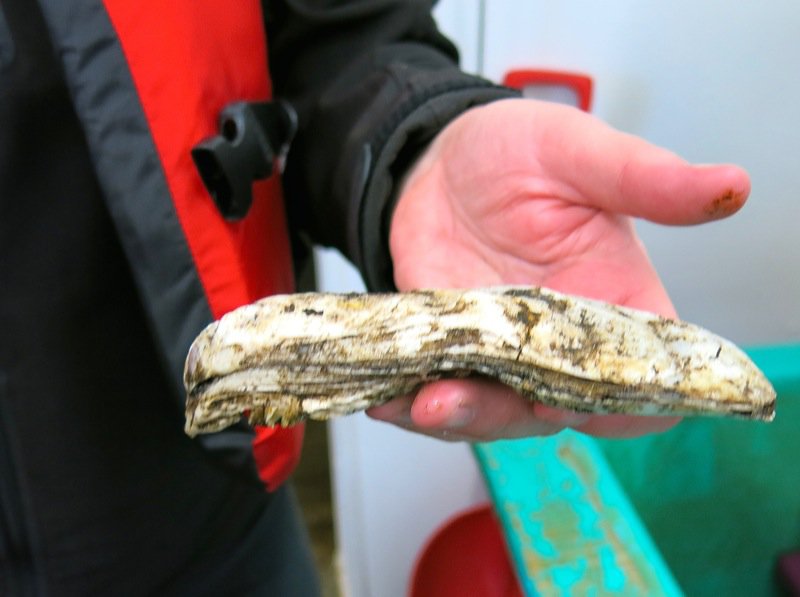
There are mutant oysters, too! Lots of them. These are used for stews and canned products. Of course, they taste as good as their perfectly shaped counterparts, but that’s how fickle we consumers are. We expect everything to look perfect, too.
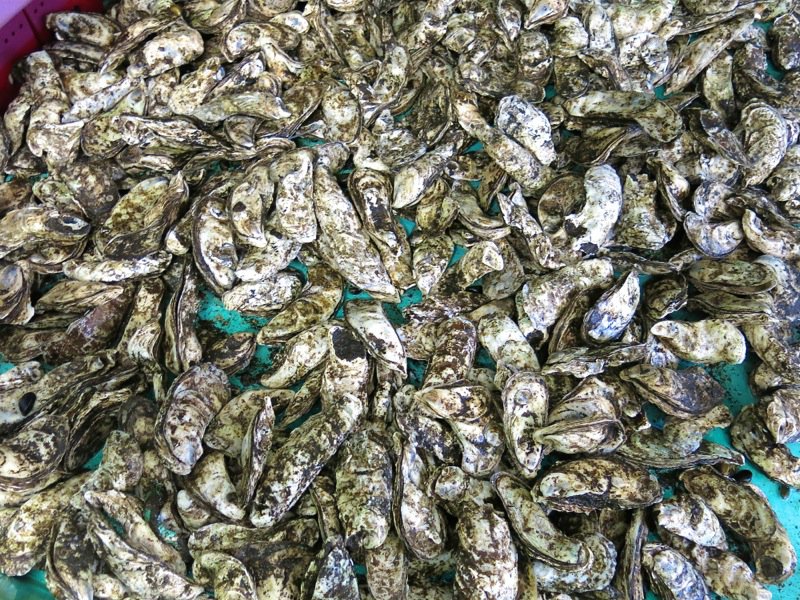
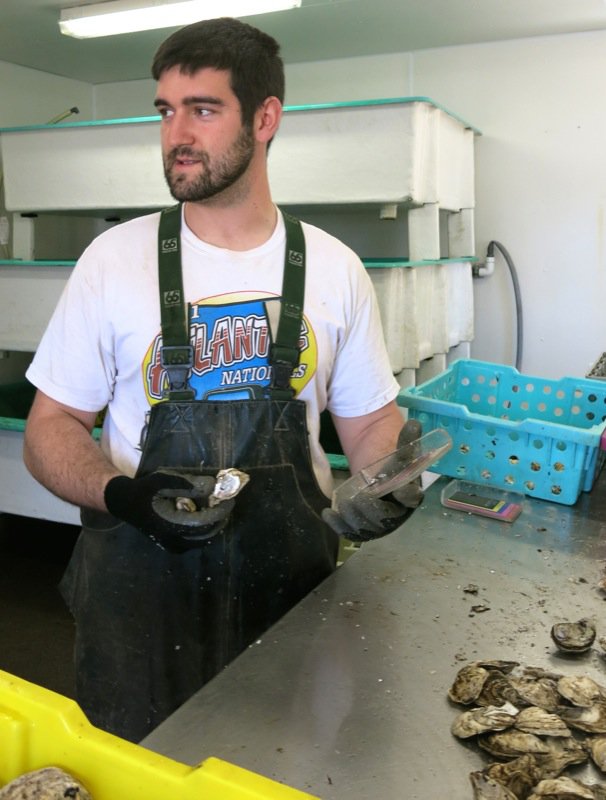

What a lovely moment. Nolan had it shucked before I could turn my head to see what he was doing. I am a purist. Love my oysters clean… but, then again, there isn’t anything accompaniment that I haven’t enjoyed served with an oyster, either.
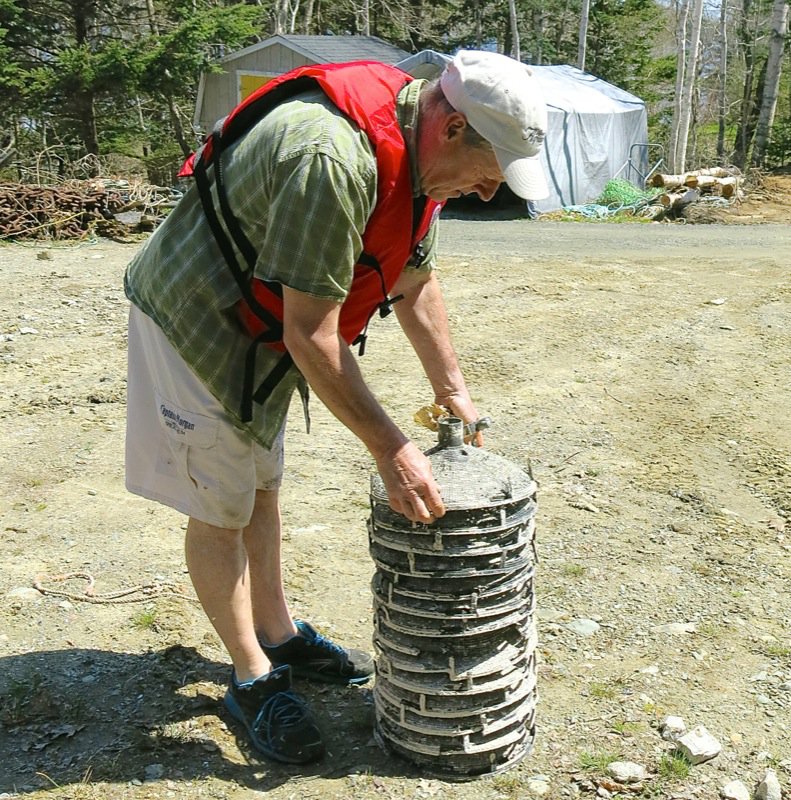
The oyster larvae are placed in these clay hats for the first several months of growth. They are protected from predators in this environment. The oyster-gro system remains out in the lake year round. As previously noted, it takes 3 years for them to reach maturity, so each section of the farm is housing various stages and ages of them. These oysters are in demand year round, but particularly at Christmas. They are harvested year round.
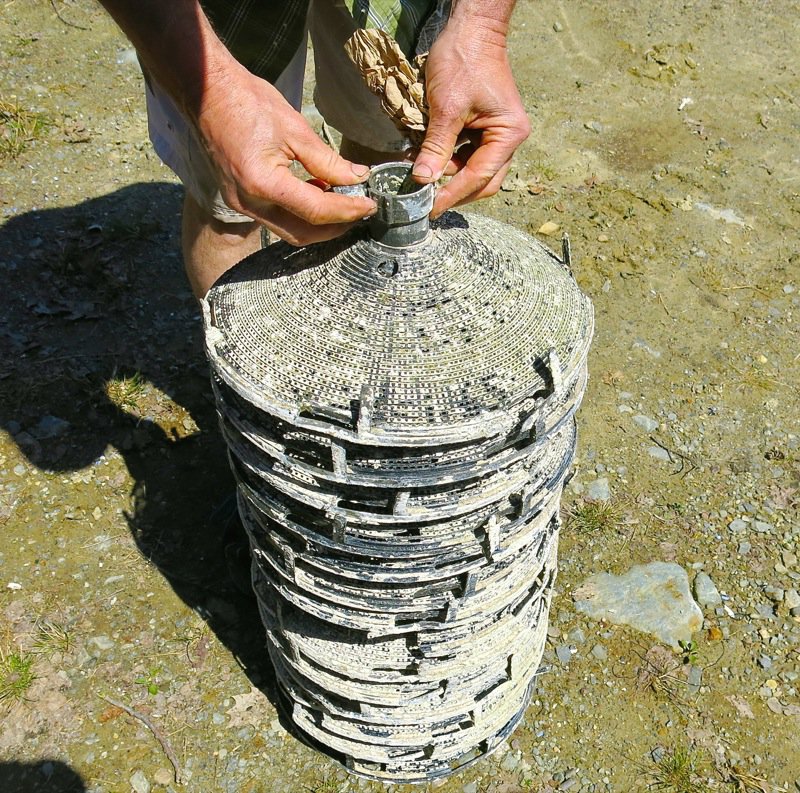
In July, they check the lake for oyster larvae by towing a plankton net behind the boat. One the larvae is spotted, they place the Chinese hat collectors nearby, cemented with a special mixture that attracts oyster larvae. By August, we they find lots of baby oysters in the hats and by late September or early October, the seed (or babies) are taken from the collectors and put into the Oyster Gro cages for next year’s growing period. And, on it goes.
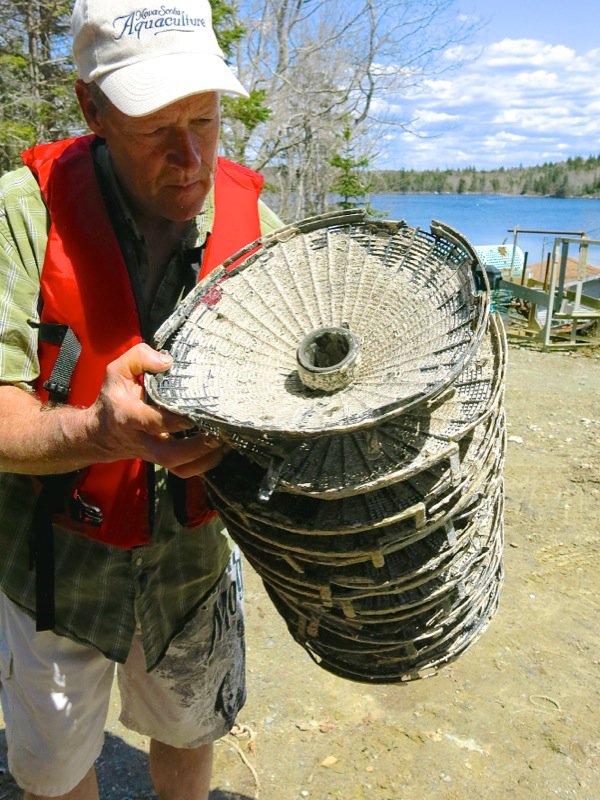
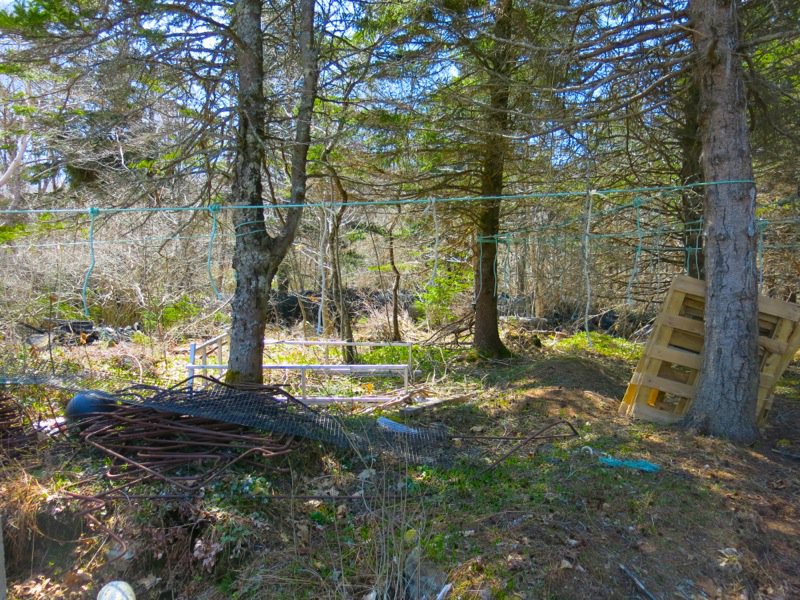
The Chinese hats and all apparatus are hung to dry. Nolan acknowledges that this work is a labour of love and very demanding; however, much less intense than lobster fishing. Though he does continue to herring seining which is a whole other post and an other entire learning experience. Suffice it to say that the oysters at Eel Lake Farm would definitely provide a very good living for this family, but as an industrious Acadian Fisherman, Nolan cannot rest on his laurels. He enjoys seining, so he continues to do that, as well. Thank you ever so much, Nolan, Kim and Colton for this unforgettable once-in-a-lifetime (for a prairie gal) experience.
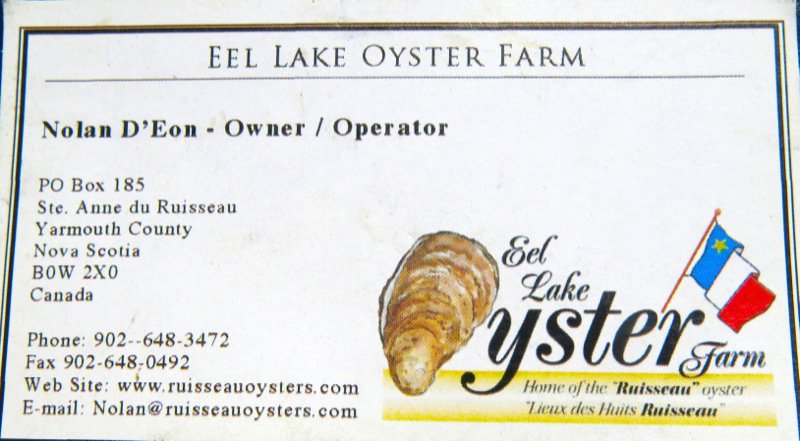
Watch the very short video to get a sense of the beauty of this lake and the work the family undertakes.
AFTER WORDS: I just heard the word “seining” this year and have so many reasons to return to this cultural treasure trove of Canada. Herring seining. The way Nolan does it is apparently a dying art. The herring is usually fished to feed the lobster, but let us not forget the Canadian heritage dish from Nova Scotia: Solomon Gundy.
And, thank you to Bernice d’Entremont for sharing the passion, texture and heart of this vibrant Acadian community with me. I hope that I have matched your labour of love with my own through my writings to thank you for your sharings.

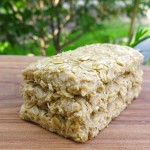

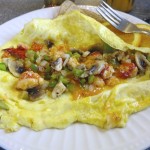
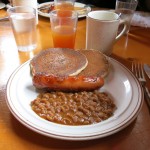
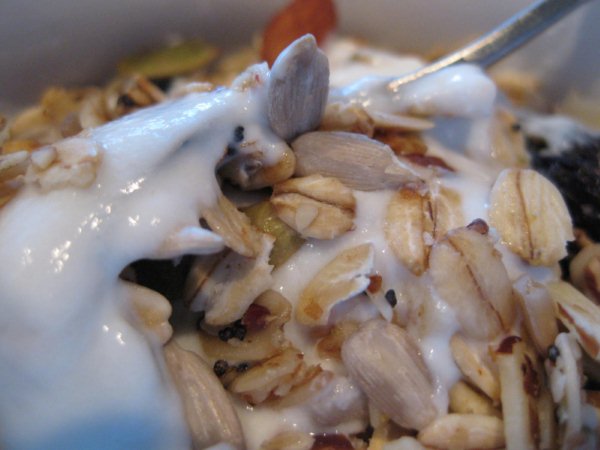



WOW! very cool experience. such a LONG process. I wish I liked oyster more…
I didn’t know you didn’t like them… thought you loved the fried ones grandad loves…no?
🙂
V
Was just connected to your posts about Nova Scotia. thanks so much for your kind words! Your pictures are wonderful and very detailed. Next time you visit, let me know!
Pam Wamback
Nova Scotia Tourism Agency – Travel Media
w. http://www.novascotia.com/travelmedia
f. http://www.facebook/novascotiatravelmedia
t. @pamatnovascotia
I sure will, Pam!
Appreciate you chiming in!
🙂
Valerie
Dear Valerie,
I work at the University of Victoria and am writing a short ‘policy-relevant’ paper for a non-profit, non-governmental organization, the Canadian Climate Forum, titled ‘Ocean Acidification in Canada’s Coastal Waters: Climate Change, Processes and Impacts’. I would like to include 1 or 2 pictures of oyster farms in Canada, and stumbled on you visit to Eel Lake Oyster Farm. I am requesting permission to use 1 of the following images: #7 and #8 in this article. I would like if possible the original high resolution versions if you have them.
Thank-you so much for your consideration,
Kenneth Denman, Adjunct Professor, School of Earth and Ocean Sciences, University of Victoria
I have sent you an email Ken.
Please check your spam.
Sincerely,
Valerie